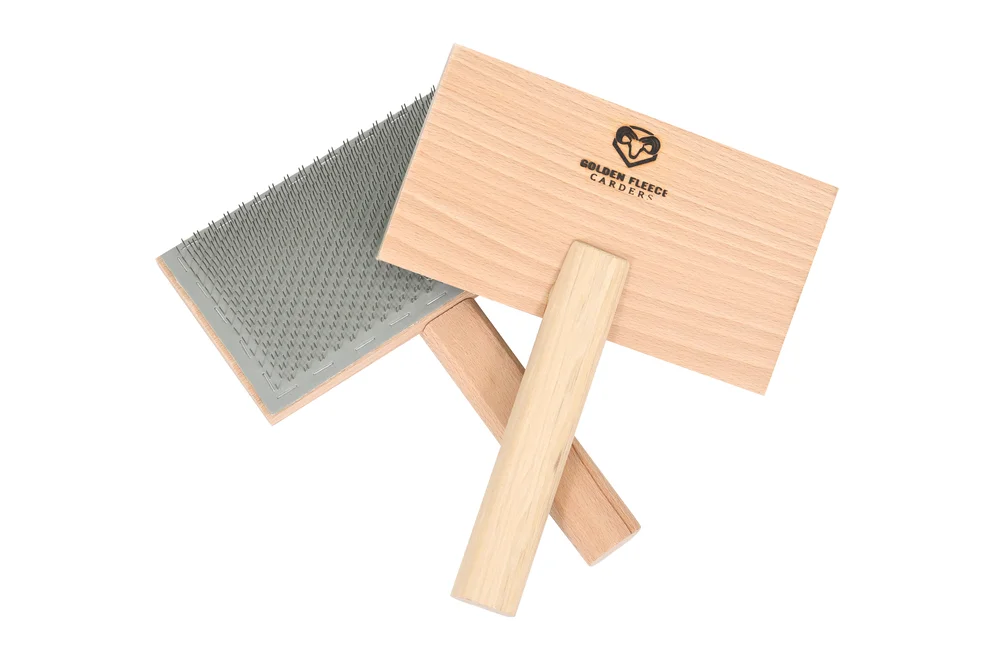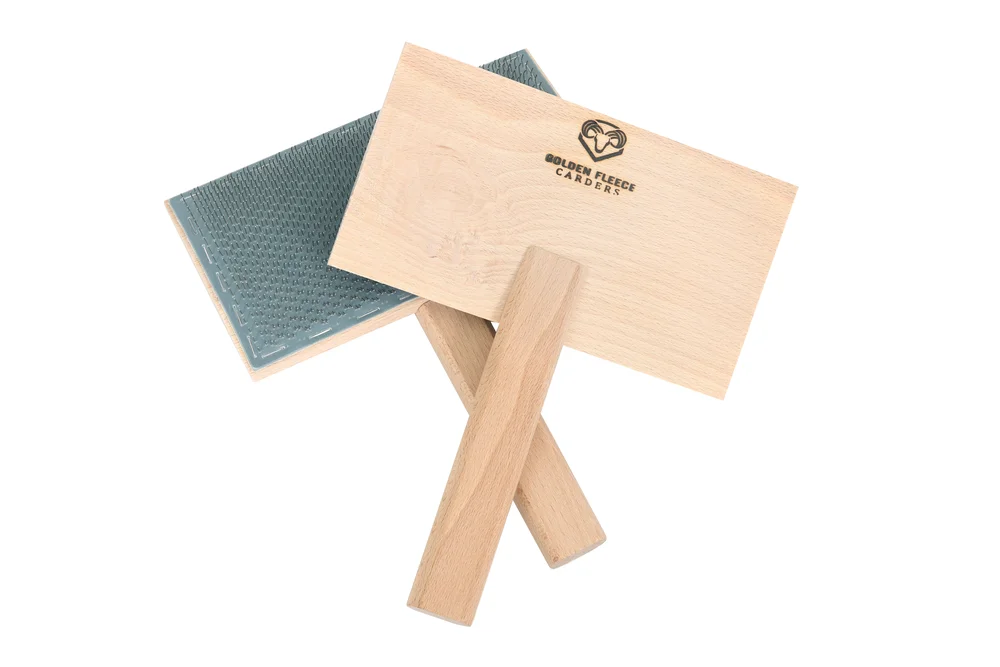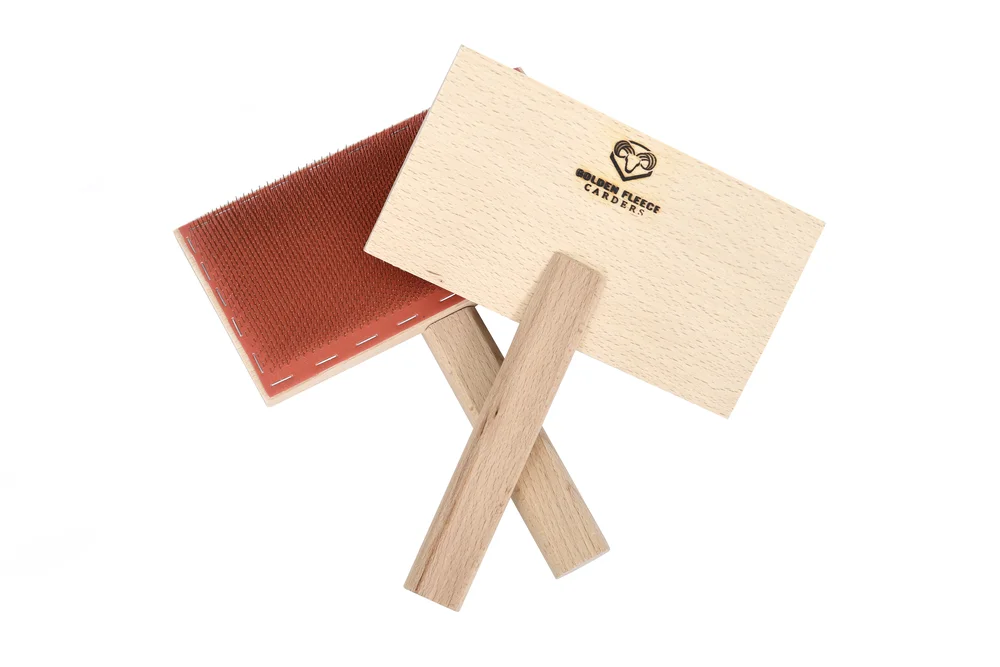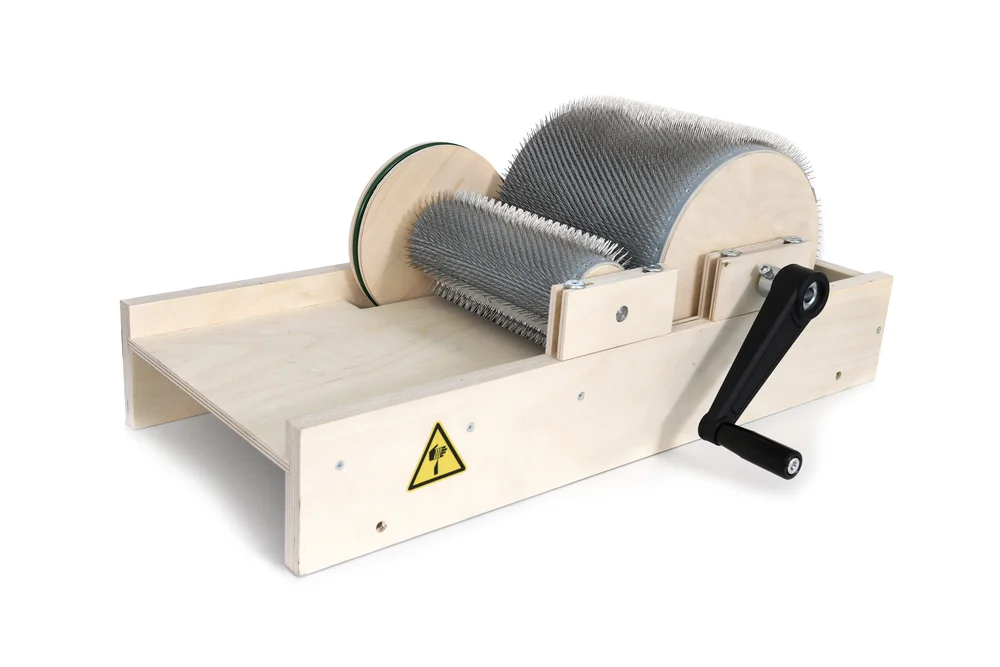ABOUT CARDING
What is Carding?
Home spinning, the age-old craft of transforming raw fibers into yarn, is a rewarding and creative endeavor that allows individuals to connect with a timeless tradition while producing unique, handmade textiles. At the heart of this craft lies carding, a fundamental process in preparing fibers for spinning.
Carding is the initial step in the journey of turning raw fleece or other fibers into a form suitable for spinning. The primary purpose of carding is to separate, align, and blend the fibers, creating a uniform and manageable mass known as “rolags” or “batts.” Carded fiber is easier to draft and spin into a consistent and smooth yarn.
The Carding Tools:
Hand Carders and Drum Carders Two primary types of carding tools are commonly used in home spinning:
1. Hand Carders: Hand carders are portable, handheld devices consisting of two wooden paddles, each covered in carding cloth. They are operated by hand and are ideal for small-scale carding and blending. Hand carders are versatile and allow for precise control over fiber preparation. They are a favorite tool among hand spinners and fiber artists for creating custom blends and color gradients.
2. Drum Carders: Drum carders are larger, mechanized machines designed for processing larger quantities of fiber efficiently. They feature a rotating drum covered in carding cloth. Drum carders are perfect for carding larger quantities of wool, blending different fiber types, and creating homogeneous batts for spinning. They are particularly useful for spinners working with larger fleece or batches of fiber.
The Carding Process:
• To card fibers, the crafter starts by separating the raw fleece into smaller locks or sections.
• These locks are then placed on the carding surface (either hand carders or a drum carder) and gently but thoroughly combed through.
• As the fibers pass through the teeth of the carding tools, they become separated, aligned, and blended.
• The crafter continues this process until the fibers form a uniform and airy mass known as a rolag (for hand carders) or a batt (for drum carders).
• These carded fibers are ready to be drafted and spun into yarn using a spinning wheel or spindle.
Carding is not merely a preparatory step; it is an art form in itself. Fiber artists use carding to create intricate color blends, texture variations, and artful gradients. By combining different fiber types, colors, and techniques, spinners can produce one-of-a-kind yarns that showcase their creative vision.
Usefull links:
PLY magazine: Your go-to resource for all things spinning, weaving, and fiber arts. Discover expert guidance and inspiring articles.
Ravelry: The ultimate online hub for knitters, crocheters, and fiber artists. Dive into a world of patterns, inspiration, and a thriving community to enhance your crafting journey.
The Association of Guilds of Weavers, Spinners and Dyers (UK): We are here to provide support for hand weavers, hand spinners and hand dyers with the AGWSD acting as an umbrella organisation for preserving these crafts and educating the public.
Landelijke Spingroep (NL): The “Landelijke Spingroep” is a gathering place full of information on various materials and techniques related to spinning.
Handspinngilde (DE): The association has made it its mission to promote the ancient art of hand spinning and sees itself as a contact point for all questions regarding hand spinning and related topics.
Guild of Canadian Weavers: The Guild of Canadian Weavers cultivates communities for handweaving across Canada and elevates the technical and artistic standards for handweaving.
Spin Off Magazine: Explore the Spinning Guilds Directory on Spin Off Magazine’s website. Find information about spinning guilds, connect with fellow spinners, and discover a vibrant community of enthusiasts passionate about the art of hand spinning.





